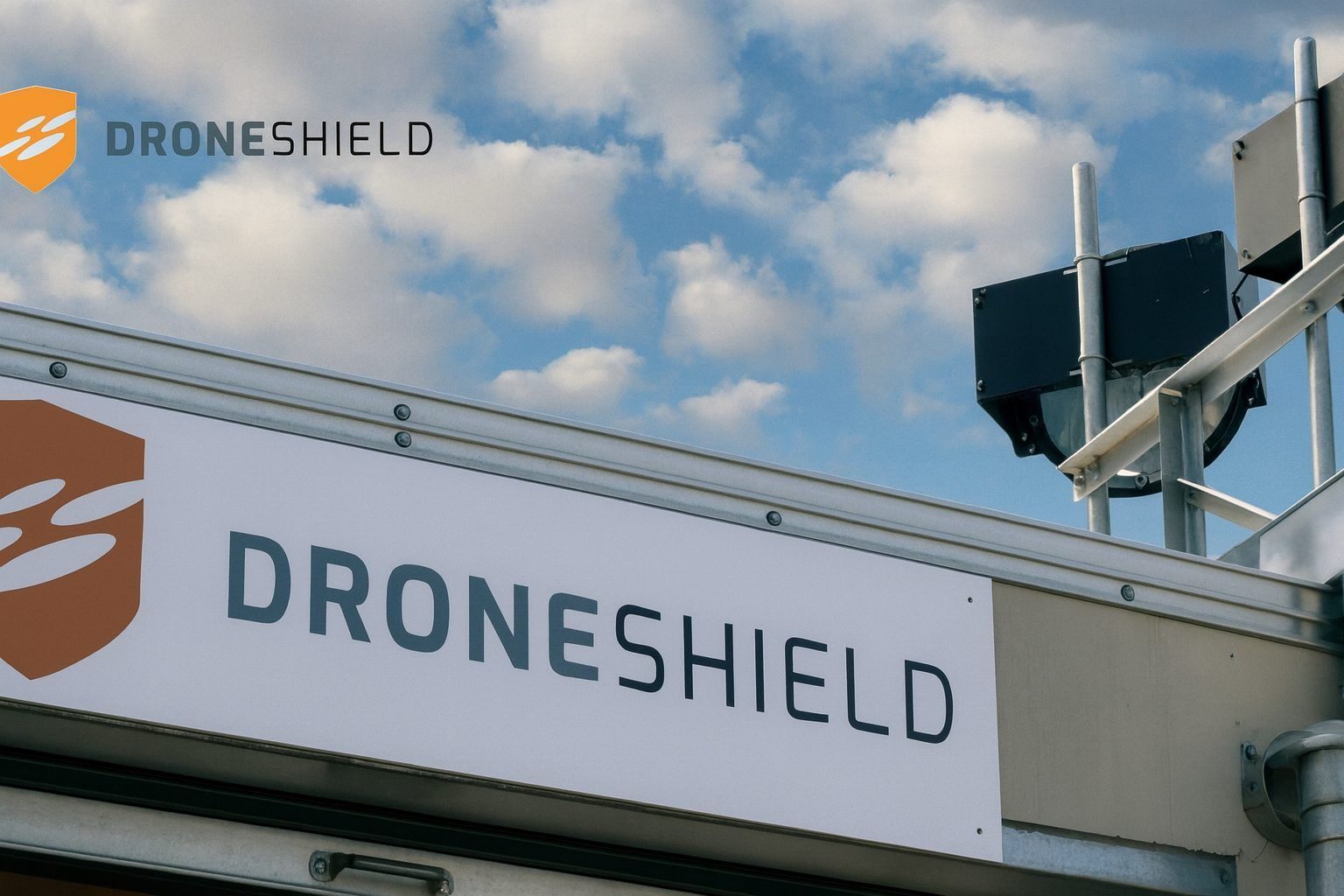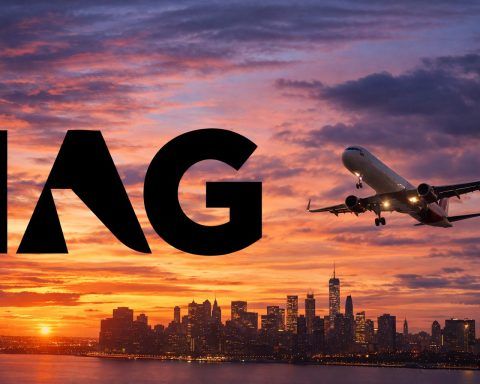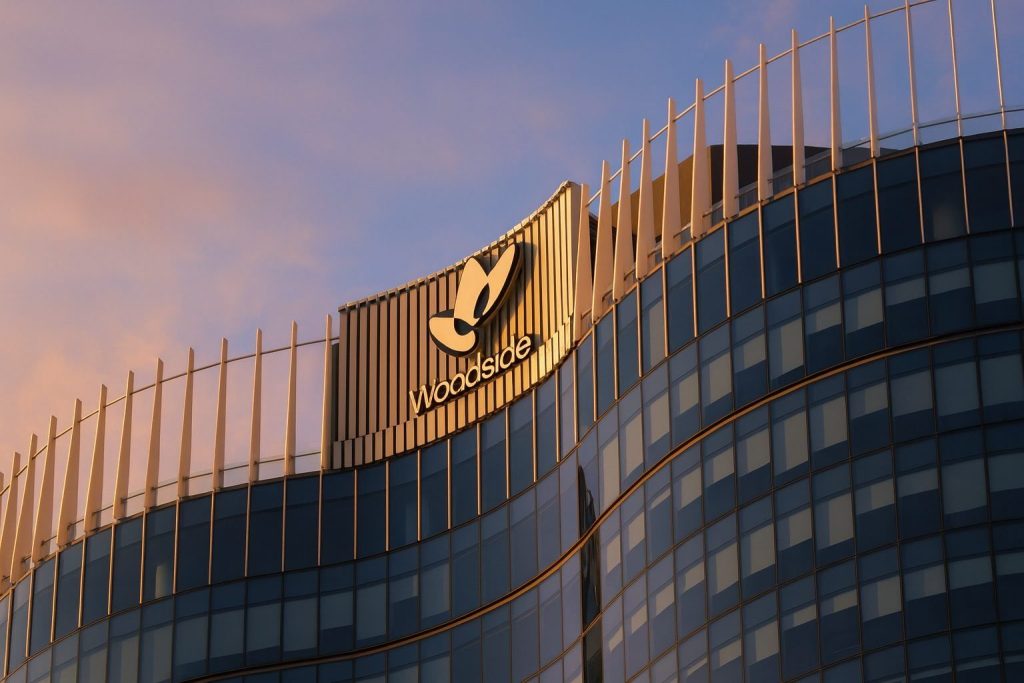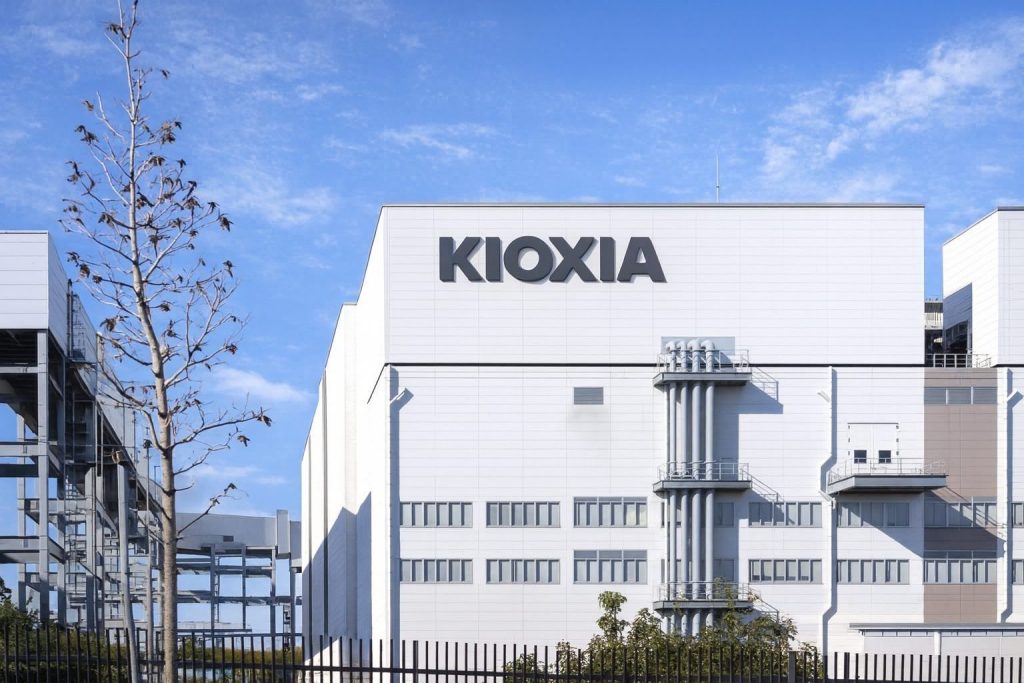DroneShield Limited (ASX:DRO), the ASX-listed counter‑drone specialist, remains one of the most closely watched names on the Australian market today, 27 November 2025, as investors weigh fresh European contract news against an ongoing governance and shareholder‑trust crisis.
DroneShield share price today: trading around the low A$2 range
After a wild fortnight, DroneShield shares are hovering in the low A$2 band.
- Wednesday, 26 November close: Technical site StockInvest records DroneShield closing at A$2.17, up 8.5% on the day from A$2.00, with intraday trading between A$2.05 and A$2.37. [1]
- Today, 27 November: Real‑time data from Investing.com shows the stock trading around A$2.10, down roughly 3% intraday, within a daily range of about A$2.075–A$2.17. [2]
Even after this bounce, the stock is still nursing heavy losses:
- Over the last two weeks, DroneShield is down about 33–34%, according to StockInvest’s technical summary. [3]
- Reuters notes the shares had surged roughly 800% by early October before collapsing about 75% from their 9 October peak, wiping out around A$4.3 billion in market value. [4]
- The 52‑week range now sits roughly between A$0.585 and A$6.705, highlighting just how extreme the volatility has been. [5]
In short: as of today, DroneShield is trying to stabilise around A$2 after one of the most spectacular boom‑and‑bust arcs on the ASX in 2025.
Fresh contract news: A$5.2m European deal keeps growth story alive
Today’s news flow continues to be dominated by the A$5.2 million European military contract first announced to the ASX on 25 November and now being picked up by defence and markets media worldwide. [6]
Key points from the contract:
- It’s a follow‑on order from an existing European military customer, placed via an in‑country reseller.
- The deal covers handheld counter‑drone systems and accessories, part of DroneShield’s growing installed base of portable C‑UAS solutions. [7]
- The company says all the hardware is already on the shelf, with cash payment due in 4Q25, so there is no long development lag. [8]
- The order builds on a record A$61.6 million European handheld C‑UAS package signed in June 2025, underscoring that portable jammers and detectors are shifting from “urgent gap‑fill” tools to standard kit for European forces. [9]
Defence outlets such as Army Recognition, EDR Magazine and SSBCrack News have all highlighted the contract in the last 48 hours, emphasising that this is the latest tranche in a multi‑year European rollout and that DroneShield is also planning a European manufacturing and assembly footprint to support its growth. [10]
DroneShield has also signalled that, given its rapid scaling, it plans to lift its “material contract” disclosure threshold from A$5 million (linked to 2024 revenue of A$57m) to A$20 million from 2026, unless there is a special reason to disclose smaller deals. [11]
For investors, the takeaway is clear: the underlying defence demand story is still very much alive, even as governance concerns dominate headlines.
Belgium’s €2.8m order shows growing NATO‑side adoption
A separate piece of coverage from Aviation24.be – published yesterday but still very much part of today’s narrative – highlights how DroneShield’s technology is being adopted across NATO airspace. [12]
According to the report:
- Belgium is buying a new batch of DroneShield “jammer gun” anti‑drone systems worth around €2.8 million to protect airports and sensitive military infrastructure.
- The devices, similar to DroneShield’s DroneGun Mk4, disable drones by disrupting radio links rather than physically destroying them.
- The purchase forms part of a €50m near‑term security package and a longer‑term €500m plan to harden Belgium’s critical infrastructure against drone threats. [13]
While the Belgian order is relatively small in dollar terms, it reinforces DroneShield’s position as a go‑to counter‑drone supplier for Western militaries, and it sits alongside the larger A$61.6m + A$5.2m European program highlighted in the ASX releases. [14]
TipRanks: JPMorgan exits as a substantial holder
One of today’s more market‑sensitive developments is a TipRanks newswire item noting that JPMorgan Chase & Co. and affiliates have ceased to be a substantial holder in DroneShield as of 24 November 2025. [15]
The notice implies:
- A meaningful reduction in JPMorgan’s position, changing the make‑up of DroneShield’s register.
- TipRanks cites a current market cap of about A$1.82 billion for DroneShield and notes its role as a specialist in advanced drone detection and mitigation technologies. [16]
For holders, a big institutional investor stepping back can cut both ways: it may remove an overhang if selling has already occurred, but it also raises questions about how large funds are assessing governance risk and valuation at current levels.
New commentary today: Can the DroneShield controversy be fixed?
The governance saga that triggered DroneShield’s spectacular sell‑off is still front‑page business news today.
AFR: “The market darling, the $50m share dump and the silent CEO”
A feature piece in the Australian Financial Review, dated 27 November, revisits how DroneShield went from market darling to governance cautionary tale. It focuses on CEO Oleg Vornik’s decision to sell roughly A$50 million of stock and the subsequent communications vacuum, asking whether investor trust can be rebuilt. [17]
StocksDownUnder: could the damage have been avoided?
An analysis article from StocksDownUnder, also dated today, poses the question: “Could the DroneShield controversy have been avoided?” While the full text is behind a technical barrier, the headline and summary suggest the authors argue that clearer policies around director selling and better disclosure practices might have significantly reduced shareholder anger. [18]
ABC & governance experts: calls to tighten ASX director‑trading rules
The controversy has spilled beyond a single company. ABC’s The Business recently aired a segment titled “Calls to change ASX trading rules after DroneShield share crash”, with governance experts arguing for a mandatory cooling‑off period before directors can sell shares after price‑sensitive announcements. [19]
ABC Radio and other outlets highlight that DroneShield’s CEO, chair and a director sold roughly A$70 million of stock in just over a week, which many investors see as inconsistent with a long‑term alignment of interests. [20]
What actually went wrong? The governance timeline in brief
From recent reporting and ASX documentation, the main flashpoints now shaping sentiment toward ASX:DRO are:
- Massive insider selling after performance options vested
- MarketIndex’s director‑transactions log shows CEO Oleg Vornik, chair Peter James and executive Jethro Marks exercising large parcels of performance options in early November, then selling tens of millions of shares into the market at prices above A$3.20–A$3.40. [21]
- The Australian and AFR both report that Vornik alone realised around A$50 million, with total director sales near A$70 million, sparking a backlash over both scale and timing. [22]
- A mis‑labelled US contract and ASX intervention
- DroneShield briefly entered a trading halt on 10 November, and later withdrew an announcement that had presented certain “November Contracts” as new orders rather than revisions of previously announced deals. [23]
- In a detailed response to an ASX aware letter, the company admitted that the contracts had been incorrectly marked as new due to an administrative error and said it was upgrading its internal controls. [24]
- Sudden resignation of the US CEO
- Shortly after these issues surfaced, DroneShield announced the resignation of its US chief executive, a move Rask Media linked directly to a 19% share‑price slump on 19 November. [25]
- Public defence of the share sales
- In interviews reported by The Australian, Vornik defended the sales as compensation tied to an ambitious revenue milestone, and not a signal of reduced confidence, but critics argue the optics were disastrous given the timing and lack of upfront explanation. [26]
- Rout in the share price and rising short interest
- Reuters describes a sharp two‑week slide marked by an 8% drop on 21 November and a prior 31.4% single‑day fall on 13 November, as short positions jumped and investors questioned the company’s governance. [27]
That sequence explains why, even with fresh contract wins, DroneShield is now trading at a fraction of its October highs and facing elevated regulatory and media scrutiny.
Fundamental view today: high growth, thinner margins and no debt
Amid the noise, today’s Simply Wall St “ASX Penny Stocks Spotlight” piece puts DroneShield’s fundamentals under the microscope. [28]
Key data points highlighted:
- Revenue: About A$107.17 million, all from its Aerospace & Defence segment. [29]
- Profitability: Profit margins have fallen from 11.3% to 5.2%, and earnings growth is lagging the sector despite strong top‑line expansion. [30]
- Balance sheet: The company is debt‑free, with short‑term assets comfortably covering short‑term liabilities. [31]
- Market cap: The article references a ~A$1.97 billion valuation, broadly consistent with other sources quoting A$1.8–1.9 billion. [32]
Simply Wall St also points to recent leadership changes in the US business and technology teams, framing them as part of a broader organisational maturation – but acknowledges that the share price has become extremely volatile. [33]
DroneShield itself describes its business as the only publicly listed company exclusively focused on the fast‑growing counter‑UAS sector, providing AI‑powered hardware and software to detect, track and defeat drone and autonomous threats for military, government, critical infrastructure and airports. [34]
Technical lens: volatility still “very high”
For traders, StockInvest’s nightly update (26 November) paints DroneShield as a “very high risk” stock:
- Daily volatility around 15–18%, with a projected intraday range today (27 November) from roughly A$1.99 to A$2.35 based on recent average true range. [35]
- The stock is in the lower part of a wide, falling short‑term trend, with the system labelling it a “sell candidate” since mid‑November despite a short‑term bounce from a pivot bottom. [36]
That technical view mirrors what price action is already telling investors: DroneShield remains a trader’s market, where sentiment around governance headlines and contract news can move the price dramatically in a single session.
How today’s news fits together for ASX:DRO
Putting today’s pieces in context:
- Operational momentum is intact
- The A$5.2m follow‑on European contract and continued roll‑out of DroneGun‑style systems across NATO partners, including Belgium, show that customer demand has not evaporated despite the governance storm. [37]
- Governance is now the core valuation question
- Major press coverage (AFR, The Australian, ABC, Reuters and others) is focused squarely on trust, transparency and board behaviour, rather than technology or contracts. [38]
- The share register is shifting
- JPMorgan’s exit as a substantial holder, combined with heavy director selling and rising short interest, means ownership is rotating, potentially increasing retail and hedge‑fund influence over day‑to‑day price swings. [39]
- Regulatory and rule‑change risk is non‑trivial
- ASX aware letters, the recent trading halt and public debate over tightening director‑trading windows all hint at ongoing regulatory focus on DroneShield’s disclosure and governance practices. [40]
- Valuation sits between growth story and trust discount
- On one side, you have a pure‑play counter‑UAS leader with rapid revenue growth, no debt and a deepening European defence footprint.
- On the other, a damaged governance reputation, thinner margins, and a history of large insider sales that may justify a steep “trust discount” until behaviours and controls demonstrably change. [41]
What to watch next
For anyone tracking DroneShield in the coming days and weeks, the key catalysts to watch include:
- Any further ASX or regulator communications
- Additional correspondence, rule proposals or enforcement actions relating to the November contract mislabelling and director trading patterns. [42]
- Outcome of internal governance reviews
- The board has already signalled reviews of disclosure and trading policies; investors will want to see concrete changes, not just statements of regret. [43]
- More large‑holder movements
- After JPMorgan’s exit, the market will scrutinise any new substantial shareholder notices, both for big buyers stepping in and for further exits. [44]
- Contract pipeline and margins
- Additional follow‑on orders or new flagship deals (especially above the new A$20m threshold) could help rebuild confidence—provided that margin trends and disclosure quality improve at the same time. [45]
- Share‑price behaviour around A$2
- Technical analyses see A$2.00 as a key short‑term support level; whether that holds or breaks will likely shape near‑term trading psychology. [46]
Final word (and a quick disclaimer)
DroneShield today sits at the intersection of big‑picture defence growth and very real governance risk. The company continues to win meaningful European contracts and position itself as a flagship counter‑drone name, but its board and executives are now under intense scrutiny from regulators, institutions and retail investors alike.
Nothing in this article is financial advice. It’s a synthesis of publicly available information as at 27 November 2025. Anyone considering ASX:DRO should do their own research and, if needed, consult a licensed financial adviser before making investment decisions.
References
1. stockinvest.us, 2. www.investing.com, 3. stockinvest.us, 4. www.reuters.com, 5. www.investing.com, 6. announcements.asx.com.au, 7. armyrecognition.com, 8. announcements.asx.com.au, 9. armyrecognition.com, 10. armyrecognition.com, 11. company-announcements.afr.com, 12. www.aviation24.be, 13. www.aviation24.be, 14. armyrecognition.com, 15. www.tipranks.com, 16. www.tipranks.com, 17. www.afr.com, 18. stocksdownunder.com, 19. www.abc.net.au, 20. www.abc.net.au, 21. www.marketindex.com.au, 22. www.theaustralian.com.au, 23. www.marketindex.com.au, 24. www.marketindex.com.au, 25. www.raskmedia.com.au, 26. www.theaustralian.com.au, 27. www.reuters.com, 28. simplywall.st, 29. simplywall.st, 30. simplywall.st, 31. simplywall.st, 32. simplywall.st, 33. simplywall.st, 34. www.droneshield.com, 35. stockinvest.us, 36. stockinvest.us, 37. armyrecognition.com, 38. www.afr.com, 39. www.tipranks.com, 40. www.marketindex.com.au, 41. simplywall.st, 42. www.marketindex.com.au, 43. www.theaustralian.com.au, 44. www.tipranks.com, 45. company-announcements.afr.com, 46. stockinvest.us









